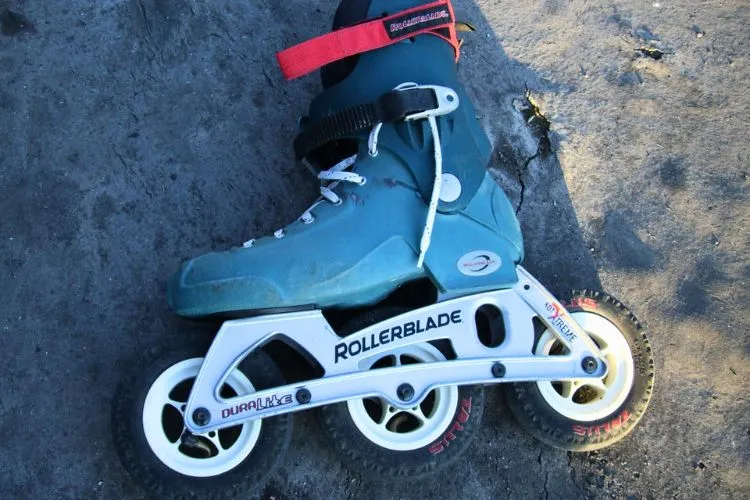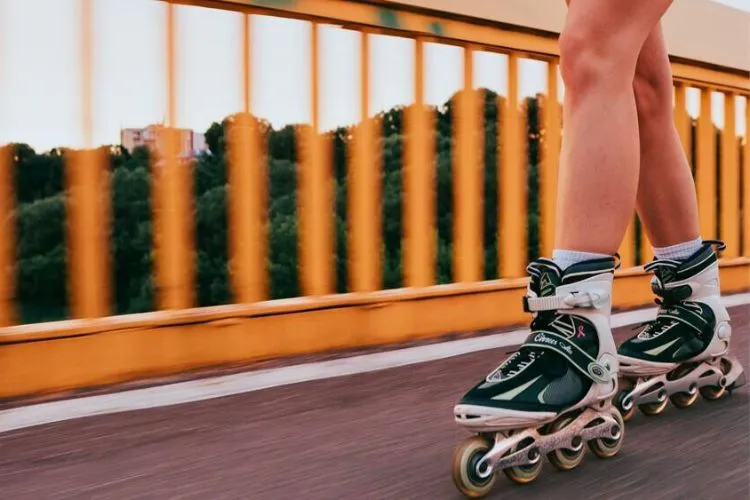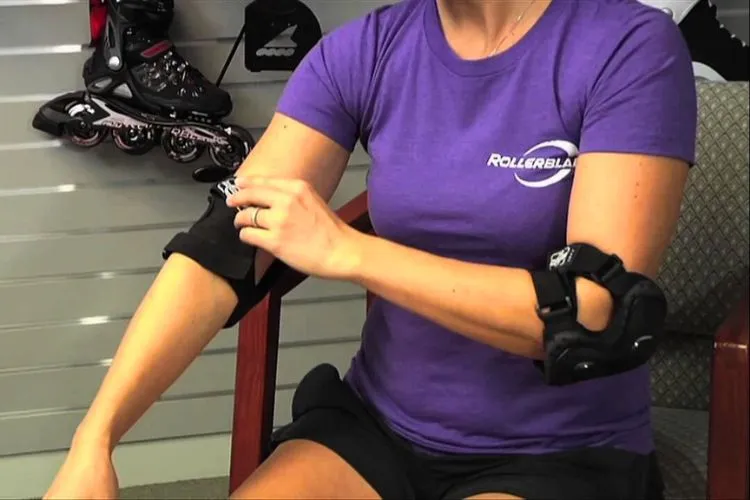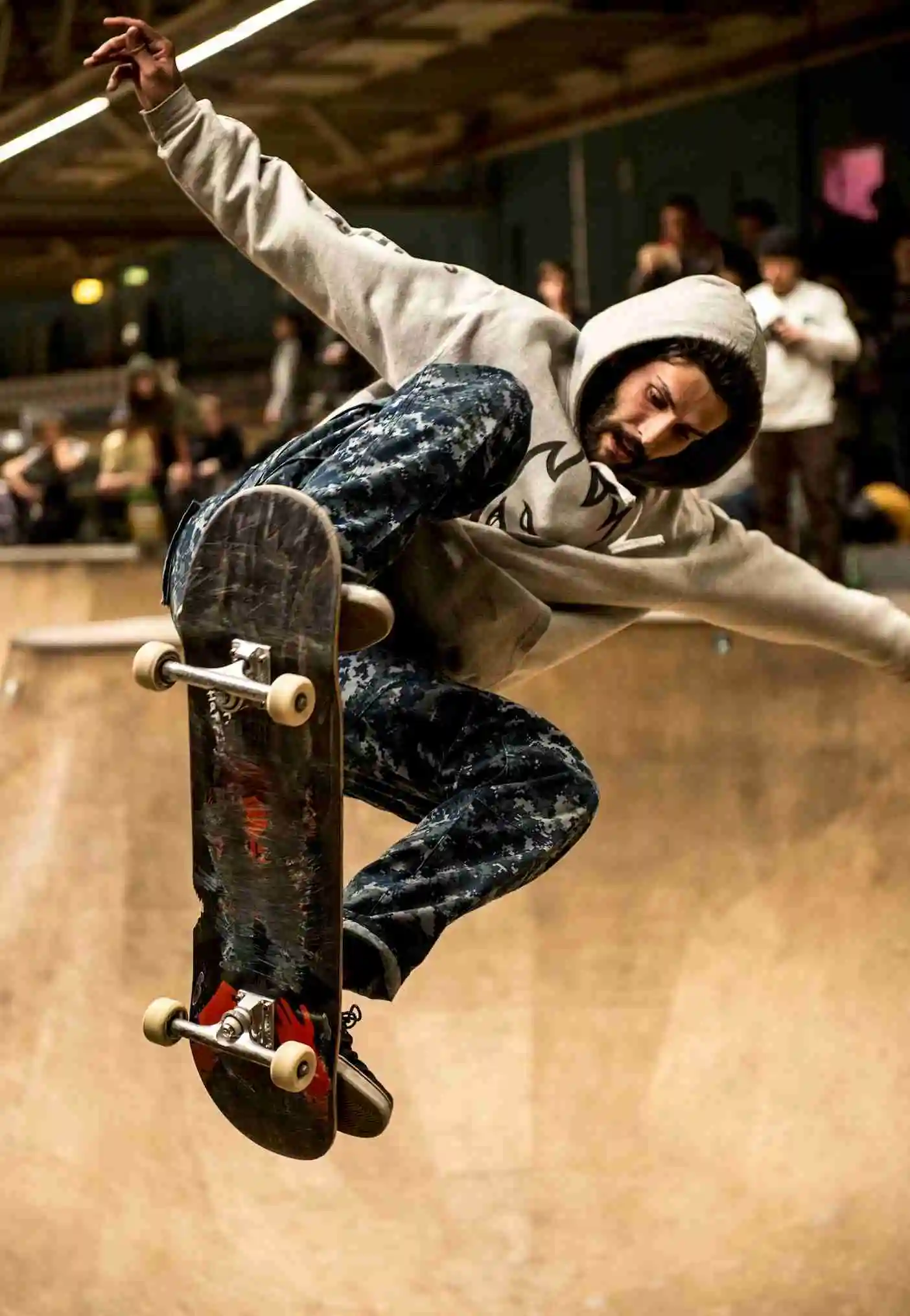Rollerblading is not just a pastime; it’s a dynamic sport that caters to a variety of styles and preferences. The key to enjoying this versatile activity lies in selecting the proper rollerblades.
This comprehensive guide will help you understand types of rollerblades, ensuring you pick the perfect pair for your skating ambitions.

Types of Rollerblades
Recreational Skates
Recreational skates are the common choice for casual skaters and beginners. These are designed for comfort and stability, offering good ankle support and a relaxed fit.
Typically, they have smaller wheels which make them more manageable and perfect for those leisurely jaunts on smooth paths.
Fitness Skates
Fitness skates emphasize a snug fit and enhanced performance for those looking to use rollerblading as a form of exercise. These skates often feature larger wheels, allowing for longer and faster rides.
The design aims to combine speed with a workout, making them ideal for skating on bike paths or roads.
Aggressive Skates
Aggressive skates are built for the adrenaline seekers. They are sturdy and durable with special features like grind plates and a strong, robust frame suitable for tricks, jumps, and grinding in skate parks. The wheels of aggressive skates are smaller and harder, offering meticulous control for technical maneuvers.
Speed Skates
Designed for velocity, speed skates are a high-performance option with longer frames and larger wheels. They are lightweight and less padded for efficiency and designed for those aiming to compete or cover long distances quickly on smooth surfaces.
Freestyle/Freeskate Skates
For skaters who crave agility and speed in urban settings, freestyle or freeskate skates are the go-to choice. They have a balance of wheel size for speed and a durable design for maneuverability, tricks, and navigating city streets.
Roller Hockey Skates
Roller hockey skates are optimized for the rink with a design that offers quick turns and agility. They are similar to ice hockey skates and adopt a low-profile wheel setup for dexterity and speed in the game.
Off-road/Rough Terrain Skates
These rugged rollerblades are for the adventurers. Off-road skates come with larger, rubber tires to tackle uneven and rough terrains, allowing you to blaze trails off the beaten path.
Factors to Consider When Choosing Rollerblades
When picking out rollerblades, your skill level should guide you. Beginners might seek the stability of recreational skates, while veterans may look for something more specialized.
The environment in which you plan to skate also influences your choice; smooth indoor floors differ greatly from the demands of rough asphalt or nature trails.

Comfort and fit are paramount, making sure the skates snugly hug your feet can prevent injuries and improve control. Wheel size is crucial as well; larger wheels can enhance speed and cross longer distances, while smaller ones provide better maneuverability.
Lastly, the budget will play a part in your decision. Fitness and recreational skates can be more affordable, while specialized skates like those for aggressive skating or speed may carry a higher price tag due to their unique features.
How to Care for Your Rollerblades?
Maintaining your rollerblades will extend their life and ensure safety during your rides. Regularly check and tighten bolts, clean the bearings, and replace worn wheels.
Using suitable safety gear, like helmets and pads, is not only crucial for your safety but also protects the skates from damage during falls.
Safety Gear and Its Importance
Safety gear is fundamental to rollerblading, acting as the first line of defense against injuries. The most crucial piece of safety equipment is the helmet.
It protects the head during falls, potentially saving lives by preventing serious brain injuries. Helmets designed for rollerblading offer coverage and impact resistance tailored to the typical falls and collisions of the sport.

Knee pads and elbow pads are also indispensable. They cushion the joints during falls, reducing the risk of fractures, sprains, and scrapes. These pads are designed to absorb shock, distribute the impact, and protect the skin and bones.
Wrist guards are vital as well. They support the wrist, a common injury site in rollerblading falls. Guards prevent the wrist from bending too much in one direction during a fall, reducing the likelihood of breaks and sprains.
Wearing these pieces of safety gear every time you rollerblade significantly lowers the risk of injury. They are an investment in your well-being and ensure that you can enjoy the sport safely for years to come.
You may also read: Rollerblades vs Roller Skates: Mastering the Wheels
Upkeep and DIY Maintenance Tips
To ensure your rollerblades remain in top condition, incorporating daily and periodic maintenance routines is essential. Here’s a straightforward guide to help you get started.
- Daily Maintenance: After each use, wipe down your skates with a dry cloth to remove debris and moisture. Pay special attention to the wheels and bearings.
- Periodic Maintenance
- Deep Cleaning: Every few months, take apart your skates to clean each component thoroughly. Wash the boot liners, if they’re removable, according to the manufacturer’s instructions.
- Lubrication of Bearings: Remove the bearings from the wheels and clean them with a solvent. Once dry, apply a lubricant designed for skate bearings to keep them spinning smoothly.
- Wheel Rotation: To ensure even wear, rotate your wheels regularly. Swap them between the left and right skates and alternate them from front to back.
By following these simple maintenance tips, you can prolong the life of your rollerblades and enjoy a smoother, safer ride.
Frequently Asked Questions (FAQs)
What types of rollerblades are best for beginners?
Beginners should consider recreational skates for their stability and comfort, which can be forgiving as they learn.
Can I use fitness skates for aggressive skating?
Fitness skates aren’t built for the rough and tumble of aggressive skating—they lack the specialized design features required for skate park activities.
How often should I replace the wheels?
Wheels should be replaced when they show significant wear, or you feel a decrease in performance. Rotate them regularly to extend their life.
What is the difference between men’s and women’s skates?
Men’s and women’s skates differ mainly in fit and sizing, as women’s skates are designed for narrower feet and lower calf positions.
Understanding Rollerblade Wheel Hardness and Durometer Ratings
Wheel hardness, measured by the durometer scale, significantly impacts performance and comfort. The durometer rating is indicated by a number followed by the letter ‘A’ (e.g., 78A, 85A). Lower numbers indicate softer wheels, while higher numbers denote harder wheels.
Soft Wheels (74A-82A): Soft wheels offer more grip and a smoother ride, making them ideal for outdoor skating on rough surfaces. They absorb shocks from cracks and bumps better than harder wheels. However, they wear down more quickly, which means you’ll need to replace them more often if you skate frequently.
Hard Wheels (83A-90A): Hard wheels are more durable and provide less grip, which can be advantageous for indoor skating on smooth surfaces. They are also better suited for aggressive skating, where precision and control are crucial. Harder wheels can offer increased speed due to less rolling resistance.
Choosing the right wheel hardness depends on your skating environment and style. For casual outdoor skaters, softer wheels are usually preferable. For indoor or aggressive skaters, harder wheels may be more suitable.
The Role of Bearings in Rollerblade Performance
Bearings are a critical component that affects the smoothness and speed of your ride. Bearings are rated using the ABEC scale (Annular Bearing Engineering Committee), with common ratings being ABEC-1, ABEC-3, ABEC-5, ABEC-7, and ABEC-9. Higher ratings generally indicate better precision and efficiency, but in practical terms, the difference may not be noticeable for recreational skaters.
ABEC Ratings:
- ABEC-1 and ABEC-3: Suitable for beginners and casual skaters who don’t require high performance. They are affordable and durable for basic use.
- ABEC-5: A balanced choice for fitness and recreational skaters, offering a good mix of speed and smoothness.
- ABEC-7 and ABEC-9: Ideal for speed skaters and those looking for high performance. These bearings offer excellent precision and reduced friction but can be more expensive.
Maintaining your bearings is essential for optimal performance. Regularly clean and lubricate them to keep dirt and moisture at bay, which can cause rust and reduce efficiency.
Choosing Rollerblades for Specific Needs
For Kids: Look for adjustable skates that can grow with your child’s feet, providing longer usability and better value. Ensure they have good ankle support and easy-to-use closure systems.
For Women: Women’s rollerblades are often designed with a narrower fit and lower calf height to accommodate anatomical differences. Comfort and support are crucial, so pay attention to padding and boot construction.
For Men: Men’s rollerblades generally have a wider fit and higher boot design for better support. They are built to handle higher speeds and more aggressive use, depending on the intended activity.
Environmental Considerations in Rollerblade Manufacturing
As sustainability becomes increasingly important, some manufacturers are adopting eco-friendly practices in rollerblade production. This can include using recycled materials, reducing waste during manufacturing, and creating longer-lasting products to minimize environmental impact.
Eco-Friendly Practices:
- Recycled Materials: Some rollerblades feature components made from recycled plastics and metals, reducing the demand for new raw materials.
- Sustainable Manufacturing: Companies are exploring ways to minimize waste and energy consumption during the production process.
- Durable Design: Creating high-quality, long-lasting products helps reduce the frequency of replacements, lowering overall environmental impact.
Choosing brands that prioritize sustainability can contribute to a greener planet while enjoying your favorite sport.
Conclusion
Choosing the right type of rollerblades is a key step towards enjoying the sport. Whether you’re skating for fitness, fun, or competition, there’s a pair that’s perfect for you.
With this guide, we hope you feel better equipped to make an informed choice that will see you gliding smoothly towards your rollerblading goals.

Matthew James is a passionate skater who wanted to create a platform to share his love for skating with others. With a vision to create a vibrant community of skaters, he aims to provide a space where skaters of all levels can connect, learn, and grow together.
